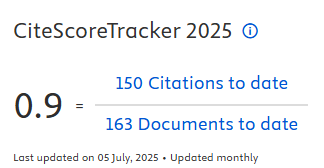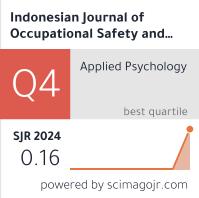Modelling Ergonomic Hazard Risks in Manual Handling: Insights from Ponorogo’s Traditional Industry
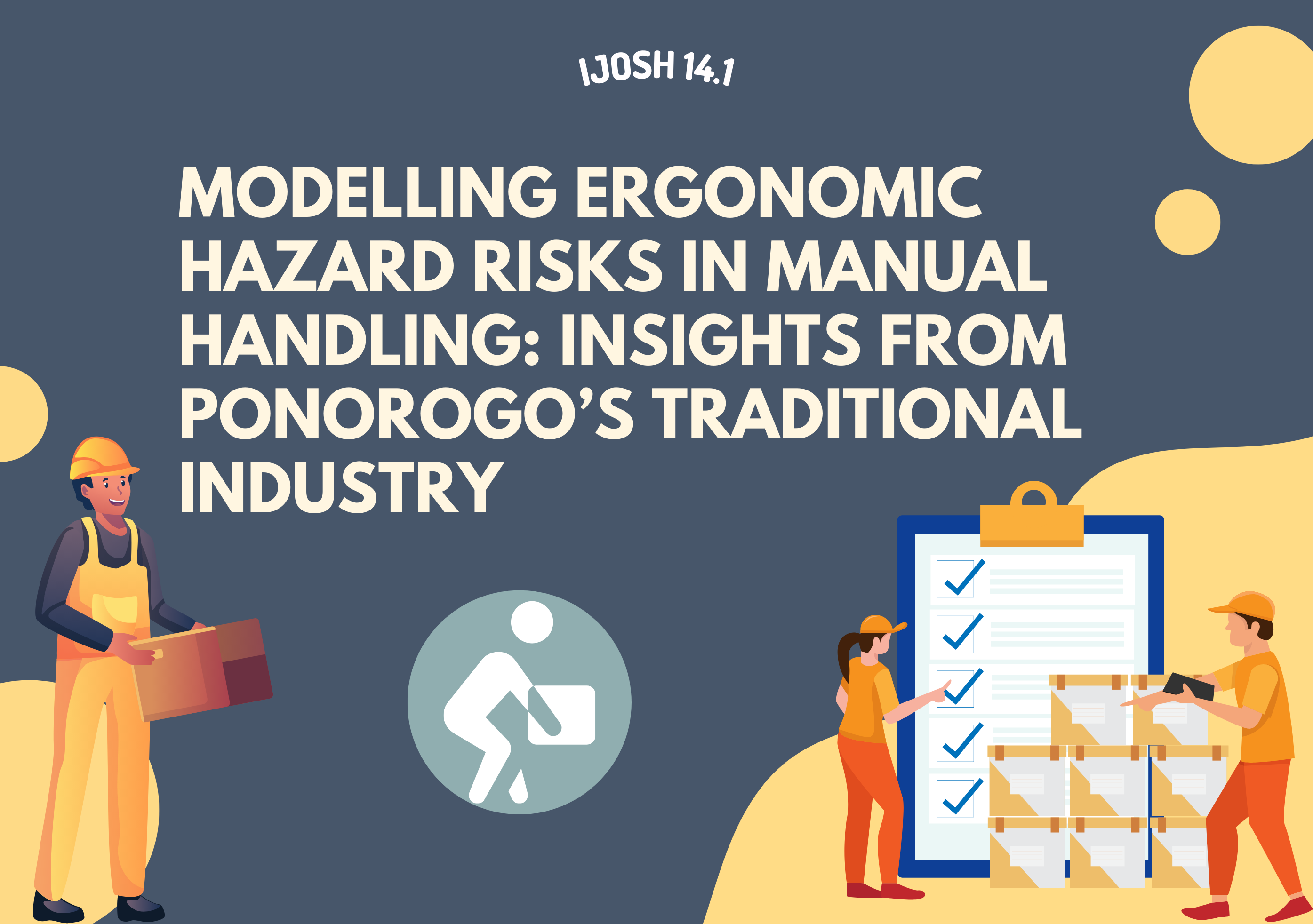
Downloads
Introduction: As the center-cultured region in Indonesia, Ponorogo Regency is dominated by traditional manufacturing industries which support regional economic growth. Most production in this sector is labor-intensive and depends on manual handling processes, which may increase the risk of work-related musculoskeletal disorders (WMSDs). This study aims to develop a model to evaluate and predict ergonomic hazards using a neural network algorithm, focusing on the relationship between manual handling postures and musculoskeletal pain in 12 body regions. Method: A cross-sectional study involved data of 250 workers measured using used Nordic Musculoskeletal questionnaire and manual handling exposure checklist based on SNI 9011:2021. A neural network model was developed based on GLM’s output to explore the complex interrelationships between manual handling postures (X variables) and musculoskeletal pain across 12 body regions (Y variables). Result: The outputs identified carrying object over 9 meters (X10), one-handed lifting (X3), and trunk twisting (X2), with X10 confirmed as the most predictor for multiple outcomes, affecting six regions. Neural network models demonstrated adequate learning capacity with stable architecture, proved by average CEE values ranging from 0.21 to 0.54. The models showed improved predictive accuracy across epochs. Conclusion: The finding shows that NN modelling may be expanded to include broader industries in Indonesia's traditional manufacturing sector as an integrated data-based information system application. However, further validation using external datasets is recommended to enhance generalizability.
Amelio, A. et al. (2023) ‘A Multilayer Network-Based Approach to Represent, Explore and Handle Convolutional Neural Networks’, Cognitive Computation, 15(1), pp. 61–89.
Arabameri, A. et al. (2020) ‘Novel Ensemble Approaches of Machine Learning Techniques in Modeling the Gully Erosion Susceptibility’, Remote Sensing, 12(11), p. 1890.
Arifah, D.A. and Basri, A. A. (2021) ‘Stretching Exercise to Reduce Musculoskeletal Pain among X Bakery’s Workers’, International Journal of Public Health Science (IJPHS), 10(3), pp. 544–550.
Badan Standardisasi Nasional (2021) ‘SNI 9011:2021 tentang Pengukuran dan Evaluasi potensi Bahaya Ergonomi di Tempat Kerja’.
Baek, M. et al. (2021) ‘Accurate Prediction of Protein Structures and Interactions using a Three-track Neural Network’, Science, 373(6557), pp. 871–876.
Chan, V.C.H. et al. (2022) ‘The Role of Machine Learning in the Primary Prevention of Work-related Musculoskeletal Disorders: A Scoping Review’, Applied Ergonomics, 98, p. 103574.
Chan, Y.-W. et al. (2020) ‘The risk classification of ergonomic musculoskeletal disorders in work-related repetitive manual handling operations with deep learning approaches’, in 2020 International Conference on Pervasive Artificial Intelligence (ICPAI), pp. 268–271.
Drew, M.D., Krammer, S. M. and Brown, T. N. (2020) ‘Effects of Prolonged Load Carriage of Knee Adduction Biomechanics’, Gait & Posture, 84, 192–197. https://doi.org/10.1016/j.gaitpost.2020.12.004
Fam, I.M., Azadeh, A. and Azadeh, M.A. (2023) ‘Modeling an Integrated Health, Safety and Ergonomics Management System: Application to Power Plants’, Journal of Research in Health Sciences, 7(2), pp. 1–10.
Fox, B.D. et al. (2020) ‘Biomechanics of Military Load Carriage and Resulting Musculoskeletal Injury: A Review’, Journal of Orthopedics and Orthopedic Surgery, 1(1).
Govaerts, R. et al. (2021) ‘Prevalence and Incidence of Work-related Musculoskeletal Disorders in Secondary Industries of 21st Century Europe: A Systematic Review and Meta-analysis’, BMC Musculoskeletal Disorders, 22(1), pp. 1–30.
Harahap, N.A. and Tambunan, K. (2022) ‘UMKM dan Pembangunan’, Cemerlang: Jurnal Manajemen Dan Ekonomi Bisnis, 2(2), pp. 228–235.
Heaton, J. (2018) ‘Ian Goodfellow, Yoshua Bengio, and Aaron Courville: Deep learning: The MIT Press, 2016, 800 pp,’, Genetic Programming and Evolvable Machines, 19(1), pp. 305–307.
Imagama, S. et al. (2020) ‘Shoulder Pain has most Impact on Poor Quality of Life among Various Types of Musculoskeletal Pain in Middle-aged and Elderly People: Yakumo Study’, Modern Rheumatology, 30(3), pp. 568–572.
Kim, W.-J., Park, H.-J. and Jeong, B.-Y. (2022) ‘A Cross-Sectional Descriptive Study of Musculoskeletal Disorders (msds) of Male Shipbuilding Workers and Factors Associated the Neck, Shoulder, Elbow, Low Back, or Knee MSDs’, Applied Sciences, 12(7), p. 3346.
Lambay, A. et al. (2021) ‘A Data-Driven Fatigue Prediction using Recurrent Neural Networks’, in 2021 3rd International Congress on Human-Computer Interaction, Optimization and Robotic Applications (HORA), pp. 1–6.
Mohammadinia, A. et al. (2019) ‘Prediction Mapping of Human Leptospirosis using ANN, GWR, SVM and GLM Approaches’, BMC Infectious Diseases, 19, pp. 1–18.
Monaco, A. et al. (2021) ‘Random Forests Highlight the Combined Effect of Environmental Heavy Metals Exposure and Genetic Damages for Cardiovascular Diseases’, Applied Sciences, 11(18), p. 8405.
Ningtyas, D.R., Febrilian, Z. and Isharyadi, F. (2023) ‘Implementasi Sni 9011: 2021 Untuk Evaluasi Ergonomi Pada Operator Produksi Departemen Plastic Injection: Studi Kasus Di Industri Manufaktur’, Jurnal Standardisasi, 25(2), pp. 103–116.
Nugraha, D.M. and Hendrati, I.M. (2023) ‘Analisis Pengaruh Tenaga Kerja UKM, Investasi UKM, dan Ekspor UKM Terhadap Pertumbuhan Ekonomi di Indonesia’, EKOMBIS REVIEW: Jurnal Ilmiah Ekonomi Dan Bisnis, 11(1), pp. 777–786.
Popescu, A. and Lee, H. (2020) ‘Neck Pain and Lower Back Pain’, Medical Clinics, 104(2), pp. 279–292.
Popescu, M.-C. et al. (2009) ‘Multilayer Perceptron and Neural Networks’, WSEAS Transactions on Circuits and Systems, 8(7), pp. 579–588.
Saha, S. et al. (2022) ‘Prediction of Spatial Landslide Susceptibility Applying the Novel Ensembles of CNN, GLM and Random Forest in the Indian Himalayan Region’, Stochastic Environmental Research and Risk Assessment, 36(10), pp. 3597–3616.
Sahoo, A.K. and Chakraverty, S. (2024) ‘An Unsupervised Wavelet Neural Network Model for Approximating the Solutions of Non-linear Nervous Stomach Model Governed by Tension, Food and Medicine’, Computer Methods in Biomechanics and Biomedical Engineering, 27(11), pp. 1538–1551.
Sarkar, S. and Maiti, J. (2020) ‘Machine Learning in Occupational Accident Analysis: A Review using Science Mapping Approach with Citation Network Analysis’, Safety Science, 131, p. 104900.
Sauter, M. et al. (2021) ‘Manual Handling of Heavy Loads and Low Back Pain among Different Occupational Groups: Results of the 2018 BIBB/BAuA Employment Survey’, BMC Musculoskeletal Disorders, 22, pp. 1–14.
Senjaya, W.F., Yahya, B.N. and Lee, S.-L. (2021) ‘Ergonomics Risk Assessment with a Hybrid Neural Network Architecture’, Proceedings of the Fall Conference of the Korean Institute of Industrial Engineers, pp. 839–848.
Skals, S. et al. (2021) ‘Manual Material Handling in the Supermarket Sector. Part 2: Knee, Spine and Shoulder Joint Reaction Forces’, Applied Ergonomics, 92, p. 103345.
Umar, R.Z.R. et al. (2021) ‘The Effect of Transfer Distance to Lower Back Twisting and Bending Patterns in Manual Transfer Task’, Jurnal Teknologi (Sciences & Engineering), 83(2), pp. 125–133.
Vinatra, S. (2023) ‘Peran Usaha Mikro, Kecil, dan Menengah (UMKM) dalam Kesejahteraan Perekonomian Negara dan Masyarakat’, Jurnal Akuntan Publik, 1(3), pp. 1–8.
Wang, G. (2019) ‘Artificial Neural Networks’, in G. Wang, Y. Zhang, X. Ye and X. Mou (Eds.), Machine Learning for Tomographic Imaging. IOP Publishing.
WHO (2022) ‘Musculoskeletal Health’, Newsroom. Available at: https://www.who.int/news-room/fact-sheets/detail/musculoskeletal-conditions.
Wulandari, R., Rachmat, A.N. and Handoko, L. (2023) ‘Analisis Pekerjaan Manual Material Handling Menggunakan SNI 9011: 2021 dan Composite Lifting Index’, in Conference on Safety Engineering and Its Application, pp. 44–53.

This work is licensed under a Creative Commons Attribution-NonCommercial-ShareAlike 4.0 International License.

In order to be accepted and published by The Indonesian Journal of Occupational Safety and Health, Author(s) who submit an article should complete all the review process. The copyright of received articles assigned to the The Indonesian Journal of Occupational Safety and Health and Department of Safety and Health, Universitas Airlangga as publishers of the journal. The intended copyright includes the rights to publish articles in various forms (including reprints).
The Editorial Team of The Indonesian Journal Of Occupational Safety and Health and Department of Safety and Health strive to ensure that no errors occur in the articles that have been published, both data errors and statements in the article.
Users of this website will be licensed to use materials from this website following the Creative Commons Attribution-NonCommercial-ShareAlike 4.0 International License. No fees charged. Please use the materials accordingly.
------------------------------------------------------------------------------------------------------------------------------------------------------------------------------------------
Attribution ” You must give appropriate credit, provide a link to the license, and indicate if changes were made. You may do so in any reasonable manner, but not in any way that suggests the licensor endorses you or your use.
NonCommercial ” You may not use the material for commercial purposes.
ShareAlike ” If you remix, transform, or build upon the material, you must distribute your contributions under the same license as the original.

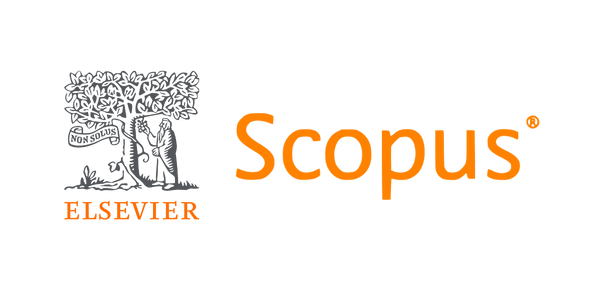
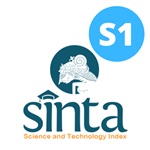




 How to Submit Articles in OJS
How to Submit Articles in OJS
